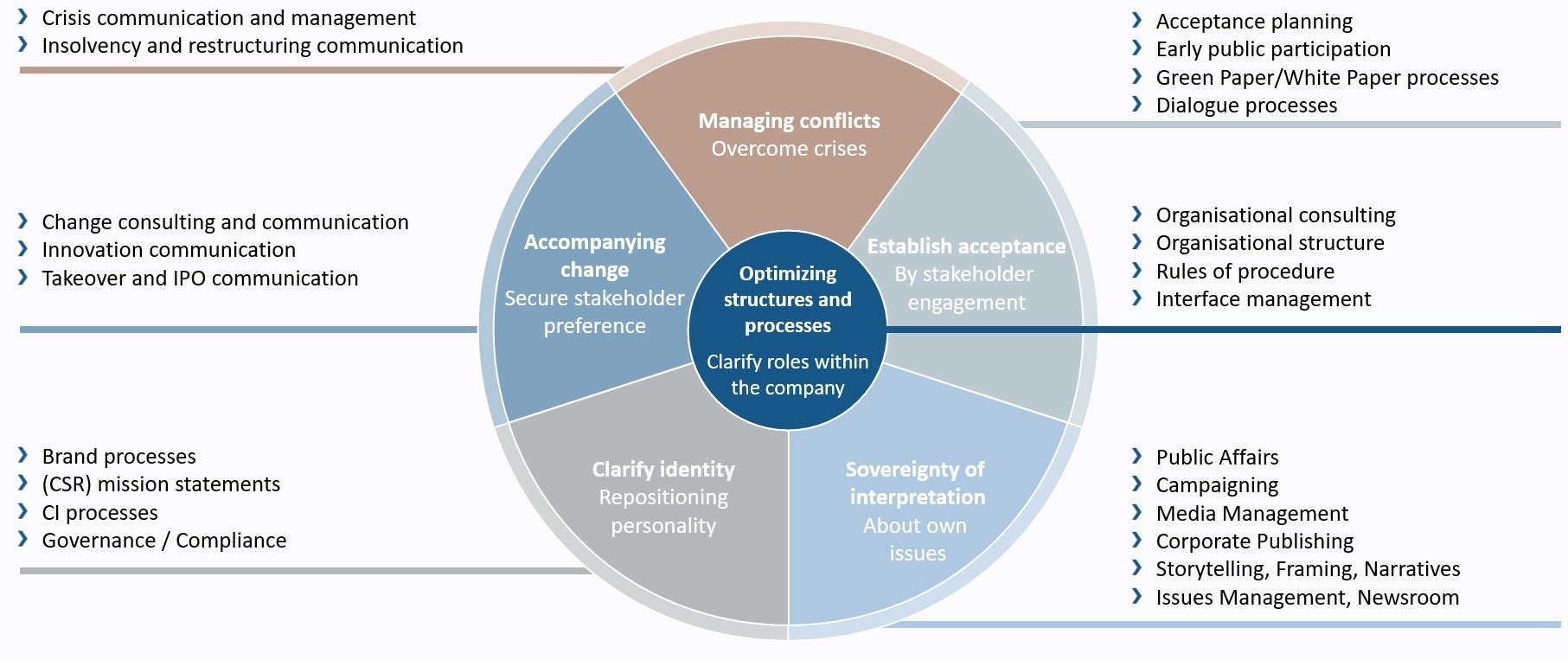Benefit from our scientifically based approach.
By combining many years of practical experience with the scientific concept of relationship assets (“Beziehungskapital”), we have developed our own consulting approach.
Our approach follows a fundamentally new idea. Management decisions and their communication must pursue a primary objective: To increase the relationship assets of the company, institution, or organisation. This is precisely where our consulting services come in. We consistently align management decisions and their communication with the optimisation of stakeholder relationships. Our approach focuses on the relationship assets provided by stakeholders and makes it measurable. In doing so, we work with a dual change of perspective: on the one hand, we analyse the relationship assets from the perspective of the stakeholders, and on the other hand, we develop strategies to optimise the relationship assets from the perspective of the organisation and its interests.
Get more information about our concept of relationship assets here (GER).


Whether infrastructure projects, reform projects or urban development tasks: citizens and the public must be actively involved. This is increasingly demanded by those involved and affected.
Our approach of acceptance planning improves political debate or technical planning through early integration and consultation. Strategic process and communication management ensures understanding and actively accelerates implementation.


The stakeholder environment is becoming more complex and therefore more conflictual. Sender-oriented communication cannot counteract this. As a result, organisations find themselves in a situation characterised by the conflicting expectations of their stakeholders.
Strategic stakeholder management is the basis for better understanding conflicts, anticipating them and managing both short-term crises and long-term conflicts.

An effective structure and clear processes with defined internal interfaces form the basis for systematic stakeholder management.
The aim is to make better use of existing contacts and networks, to reach relevant actors more directly, to systematise the exchange and collaboration with stakeholders and to communicate consistent messages across all channels and formats.

Wilhelmstraße 118
10963 Berlin
Tel.: +49 30 520 00 57 0
E-Mail: info@jk-kom.de
Junghofstraße 16
60311 Frankfurt
Tel.: +49 69 87 001 28 28
E-Mail: frankfurt@jk-kom.de
Stadthausbrücke 8
20355 Hamburg
Tel.: +49 40 226 33 11 55
E-Mail: hamburg@jk-kom.de
Am Waldspitz 1
81375 München
Tel.: +49 30 520 00 57 0
E-Mail: muenchen@jk-kom.de
Wir nutzen Cookies auf unserer Website. Einige von ihnen sind essenziell, während andere uns helfen, diese Website und Ihre Erfahrung zu verbessern. Wenn Sie unter 16 Jahre alt sind und Ihre Zustimmung zu freiwilligen Diensten geben möchten, müssen Sie Ihre Erziehungsberechtigten um Erlaubnis bitten. Wir verwenden Cookies und andere Technologien auf unserer Website. Einige von ihnen sind essenziell, während andere uns helfen, diese Website und Ihre Erfahrung zu verbessern. Personenbezogene Daten können verarbeitet werden (z. B. IP-Adressen), z. B. für personalisierte Anzeigen und Inhalte oder Anzeigen- und Inhaltsmessung.